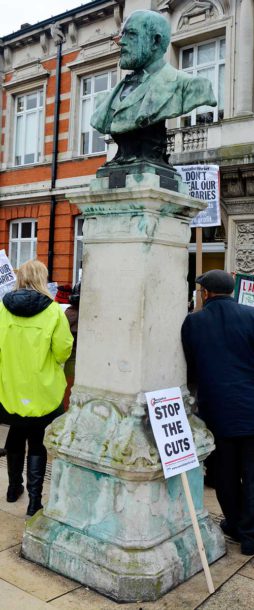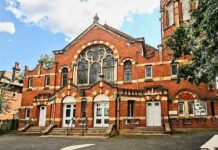 A Brixton landmark, the bust of Sir Henry Tate outside Brixton Tate Library, has been given Grade II listing by Historic England in recognition of its special architectural or historic interest.
A Brixton landmark, the bust of Sir Henry Tate outside Brixton Tate Library, has been given Grade II listing by Historic England in recognition of its special architectural or historic interest.
Streatham’s Tate Library has also been given the same listing.
Tate lived in Park Hill, Streatham, where he built a gallery for his art collection that he opened to the public on Sundays before establishing his Tate Gallery in 1897.
He made his fortune from sugar, buying the patent for sugar cubes from Germany and being the first to make them in Britain. He was said to be known for his concern with workers’ conditions
Tate funded a number of arts and cultural institutions including the Tate Institute in Silvertown, east London, where his sugar-refining business was based.
Announcing the listing, Lambeth council said that after Tate’s death in 1899 his widow Jane bought the space to the west of Brixton Library, now Brixton Oval, which she landscaped as Tate Gardens and gave to the people of Lambeth in 1905 as a memorial.
The bust was paid for by public subscription in that year and placed at the centre of the gardens.
The gardens have since been replaced and the bust was moved to its present position some time before 1980.







When Lambeth asked Tate for money to build Brixton Library he agreed on condition they raised the library rate from 1/2d to 1d in the pound. They refused at first, but when put out to plebicite, the people voted to pay the extra to have a free public library. How about a referendum on raising council tax to reopen Minet & Carnegie Libraries (without gyms or other impositions) and ensure no more are closed?
No, I already pay more than enough in taxes including council tax.